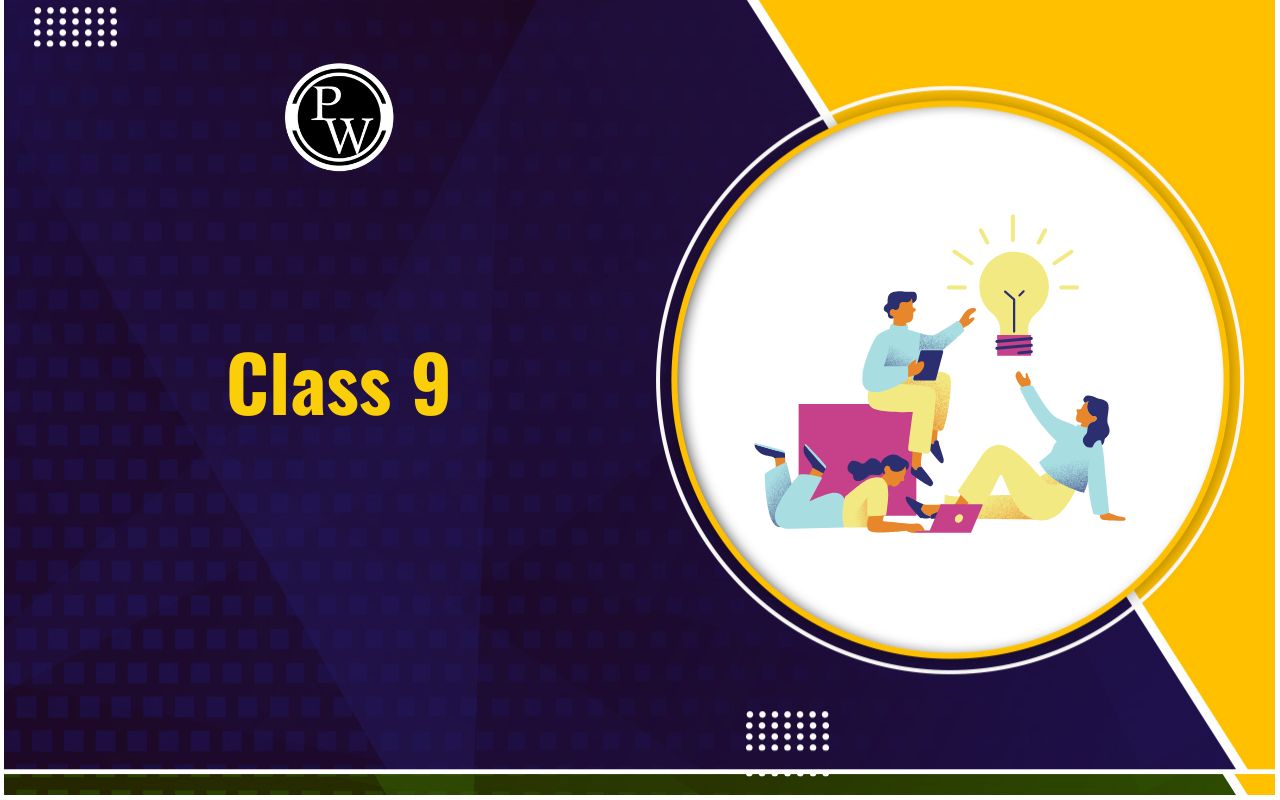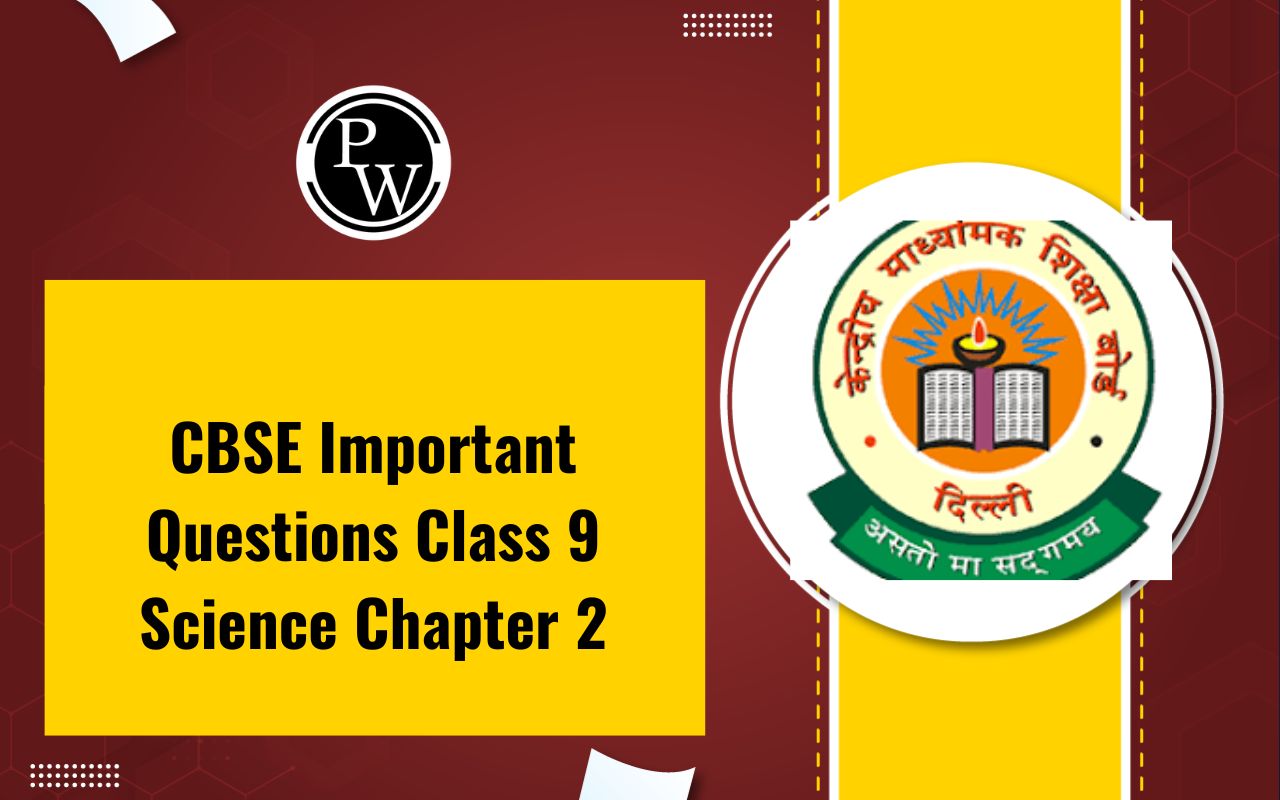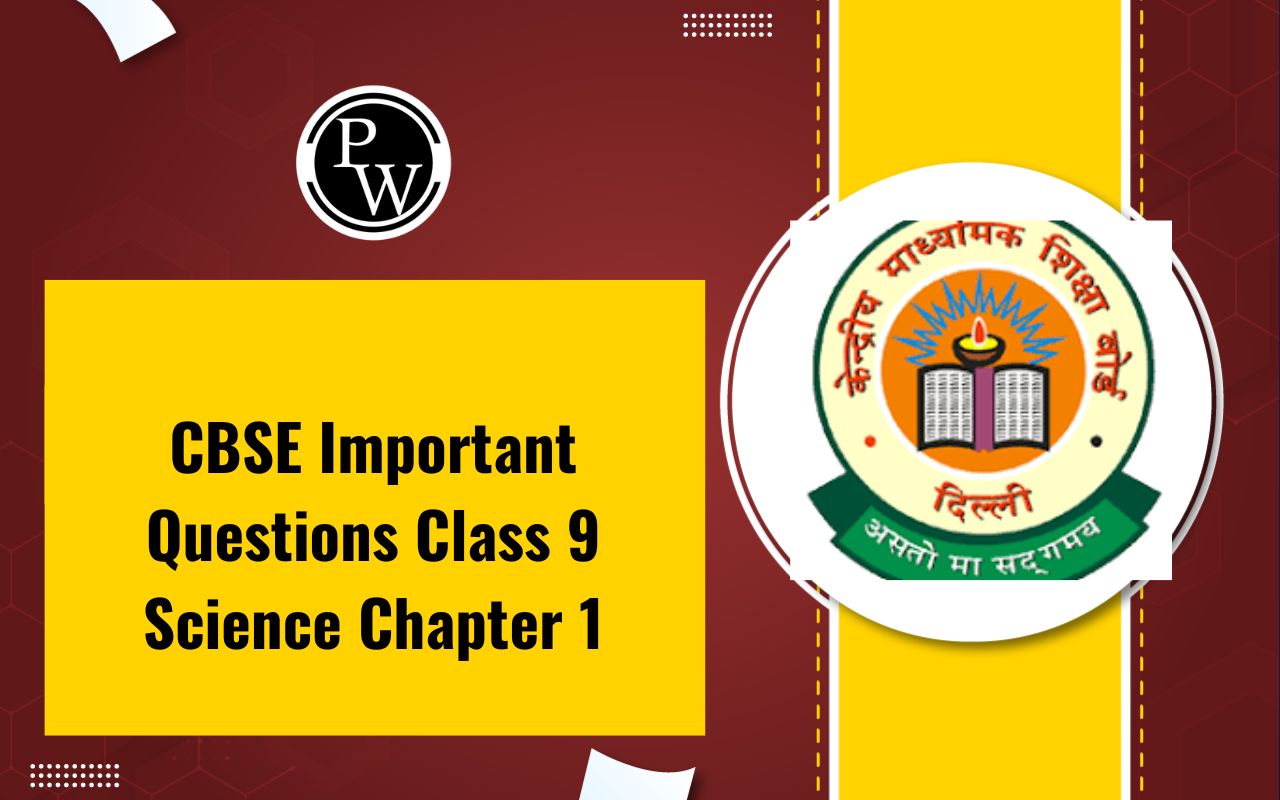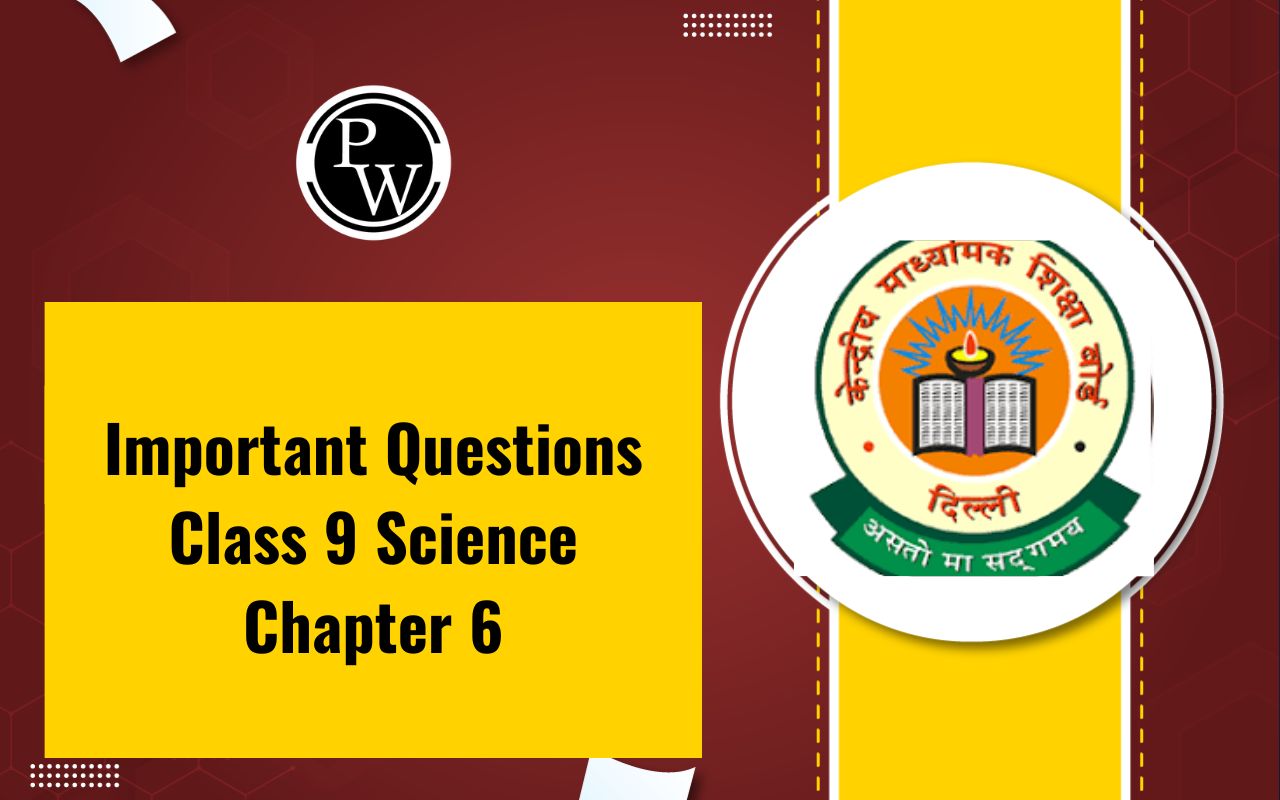
NCERT Solutions for Class 9 Science Chapter 8: NCERT Solutions for Class 9 Science Chapter 8 Force and Laws of Motion are designed to assist students in understanding concepts clearly and dispelling any concerns they may have. NCERT Solutions for Class 9 Science Chapter 8 is a useful reference that aids students in effectively and quickly clearing up any issues they may have. NCERT Solutions for Class 9 Science Chapter 8 are jam-packed with CBSE and competitive exam-oriented questions, activities, and exercises in an approachable format for students.
Subject matter experts and educators with coaching expertise create and prepare NCERT Solutions for Class 9 Science Chapter 8. It is built using the concept-based approach and the exact examination responding procedure in mind. It is a thorough and organized concept-based learning program designed to give students the confidence they need to ace competitive and CBSE exams. The NCERT Solutions for Class 9 Science Chapter 8 are available in PDF and online versions.NCERT Solutions for Class 9 Science Chapter 8 Overview
NCERT Solutions for Class 9 Science Chapter 8, "Force and Laws of Motion," offers a clear and structured way to understand the fundamental concepts of forces and their effects on motion. NCERT Solutions for Class 9 Science Chapter 8 covers key topics such as Newton's three laws of motion, the concept of force, and friction. NCERT Solutions for Class 9 Science Chapter 8 provides detailed explanations and step-by-step answers to the exercises in the NCERT textbook, helping students grasp complex ideas and apply them to solve problems. This helps build a solid foundation in physics, essential for tackling both class assignments and exams effectively.NCERT Solutions for Class 9 Science Chapter 8 PDF Download
You can find the PDF link for NCERT Solutions for Class 9 Science Chapter 8 below. This PDF contains detailed NCERT Solutions for Class 9 Science Chapter 8 and explanations for understanding every concept given in the chapter.NCERT Solutions for Class 9 Science Chapter 8 PDF
NCERT Solutions for Class 9 Science Chapter 8 Force and Laws of Motion
Below we have provided NCERT Solutions for Class 9 Science Chapter 8 for the ease of the students –1. Which of the following has more inertia: (a) a rubber ball and a stone of the same size? (b) a bicycle and a train? (c) a five-rupee coin and a one-rupee coin?
Solution
Given that inertia is a function of object mass, a heavier object will have greater inertia. The mass of the following items causes them to have greater inertia.- Stone
- Train
- Five-Rupee coin
2. In the following example, try to identify the number of times the velocity of the ball changes: “A football player kicks a football to another player of his team who kicks the football towards the goal. The goalkeeper of the opposite team collects the football and kicks it towards a player of his team”. Also, identify the agent supplying the force in each case.
Solution
Football velocity varies four times. Football players can kick the ball to another player first, and then they can kick it to the custodian. Third when the football is stopped by the goalie. Fourth, when the goalie kicks the ball to a member of his team. Agent supplying the force: a) The First case is the First player b) The Second case is the Second player c) The Third case is the Goalkeeper d) The Fourth case is the Goalkeeper3. Explain why some of the leaves may get detached from a tree if we vigorously shake its branch.
Solution
A shaking of the tree's branch causes it to sway back and forth. Nevertheless, the branch's motion is resisted by the inertia of the leaves that are linked to it. Consequently, inertia causes the leaves that are firmly linked to the branch to stay attached, while the leaves that are weakly attached to the branch fall off.4. Why do you fall in the forward direction when a moving bus brakes to a stop and fall backward when it accelerates from rest?
Solution
Due to their inertia opposing the forward motion, the passengers initially feel a force applied to them in the backward direction when the bus accelerates forward from a state of rest. The passengers are in motion in the direction of travel once the bus is moving. The bus approaches a position of rest when the brakes are engaged. Because of their inertia, the passengers are now subject to a force that pushes them forward when the bus's motion changes. As a result, when the brakes are applied, the occupants tumble forward.Intext Questions – 2 Page: 126,127
1. If action is always equal to the reaction, explain how a horse can pull a cart.
Solution
The horse pushes backward against the Earth while it walks ahead while the cart is attached to it. The Earth exerts an equal force on the horse in the opposite direction—that is, forward. The horse and cart are propelled ahead by this force. Consequently, the cart advances.2. Explain, why is it difficult for a fireman to hold a hose, which ejects large amounts of water at a high velocity.
Solution
A firefighter experiences a reaction force from the water being ejected in the rearward direction when they are holding a hose that is rapidly ejecting significant amounts of water. Newton's third law of motion is to blame for this. The fireman's stability declines as a result of the backward force. He finds it challenging to maintain his balance while holding the hose as a result.3. From a rifle of mass 4 kg, a bullet of mass 50 g is fired with an initial velocity of 35 m s –1 . Calculate the initial recoil velocity of the rifle.
Solution
Given, the Bullet’s mass (m 1 ) = 50 g The rifle’s mass (m 2 ) = 4kg = 4000g Initial velocity of the fired bullet (v 1 ) = 35 m/s Let the recoil velocity be v 2 . Since the rifle was initially at rest, the initial momentum of the rifle = 0 The total momentum of the rifle and bullet after firing = m 1 v 1 + m 2 v 2 As per the law of conservation of momentum, the total momentum of the rifle and the bullet after firing = 0 (same as initial momentum) Therefore, m 1 v 1 + m 2 v 2 = 0 The negative sign indicates that recoil velocity is opposite to the bullet’s motion.
The negative sign indicates that recoil velocity is opposite to the bullet’s motion.
4. Two objects of masses 100 g and 200 g are moving along the same line and direction with velocities of 2 ms –1 and 1 ms –1 , respectively. They collide and after the collision, the first object moves at a velocity of 1.67 ms –1 . Determine the velocity of the second object.
Solution
Assuming that the first object is object A and the second one is object B, it is given that: Mass of A (m 1 ) = 100g Mass of B (m 2 ) = 200g Initial velocity of A (u 1 ) = 2 m/s Initial velocity of B (u 2 ) = 1 m/s Final velocity of A (v 1 ) = 1.67 m/s The final velocity of B (v 2 ) =? Total initial momentum = Initial momentum of A + initial momentum of B = m 1 u 1 + m 2 u 2 = (100g) × (2m/s) + (200g) × (1m/s) = 400 g.m.sec -1 As per the law of conservation of momentum, the total momentum before collision must be equal to the total momentum post-collision. v
2
= 1.165 m/s
Therefore, the velocity of object B after the collision is 1.165 meters per second.
v
2
= 1.165 m/s
Therefore, the velocity of object B after the collision is 1.165 meters per second.
Exercises Page: 128,129
1. An object experiences a net zero external unbalanced force. Is it possible for the object to be traveling with a non-zero velocity? If yes, state the conditions that must be placed on the magnitude and direction of the velocity. If no, provide a reason.
Solution
It is feasible, yes. As long as no outside forces are acting on an object that is moving in an imbalanced direction, it will continue to move in that direction at a constant speed. An external force that is out of balance must act upon the item to alter its velocity.2. When a carpet is beaten with a stick, dust comes out of it. Explain.
Solution
When a stick is used to beat a carpet, the force of the stick causes the carpet to move. The dust particles' inertia prevents the carpet from moving in a different direction. Hence, the dust particles are propelled in the opposite direction by the forward motion of the carpet due to a backward force. This is the reason that when the carpet is thrashed, the dust falls out.3. Why is it advised to tie any luggage kept on the roof of a bus with a rope?
Solution
When a bus is originally at rest and some luggage is placed on its roof, the bus's forward acceleration will exert force on the luggage in a backward direction. Similar to this, a force is applied to the luggage (in the forward direction) when a bus that has been moving abruptly comes to a stop owing to the deployment of brakes. Because of inertia, the luggage may fall off the bus depending on its bulk and the force used. The luggage can be secured to the bus and kept from falling out of place by tying it securely.4. A batsman hits a cricket ball which then rolls on a level ground. After covering a short distance, the ball comes to rest. The ball slows to a stop because (a) the batsman did not hit the ball hard enough. (b) velocity is proportional to the force exerted on the ball. (c) there is a force on the ball opposing the motion. (d) there is no unbalanced force on the ball, so the ball would want to come to rest.
Solution
The force of friction opposes the ball's motion as it rolls on the level ground because friction develops between the ball and the ground. The ball finally stops due to this frictional force. Thus, (c) is the right response. The ball will roll farther if the level ground's surface is lubricated (with oil or another lubricant), as this will lessen the friction that develops between the ball and the ground.5. A truck starts from rest and rolls down a hill with constant acceleration. It travels a distance of 400 m in 20 seconds. Find its acceleration. Find the force acting on it if its mass is 7 tonnes (Hint: 1 tonne = 1000 kg.)
Solution
Given, the distance covered by the truck (s) = 400 meters Time taken to cover the distance (t) = 20 seconds The initial velocity of the truck (u) = 0 (since it starts from a state of rest)
6. A stone of 1 kg is thrown with a velocity of 20 ms -1 across the frozen surface of a lake and comes to rest after traveling a distance of 50 m. What is the force of friction between the stone and the ice?
Solution
Given the mass of the stone (m) = 1kg Initial velocity (u) = 20m/s Terminal velocity (v) = 0 m/s (the stone reaches a position of rest) Distance traveled by the stone (s) = 50 m As per the third equation of motion v² = u² + 2as Substituting the values in the above equation we get, 0² = (20)² + 2(a)(50) -400 = 100a a = -400/100 = -4m/s² (retardation) We know that F = m×a Substituting the above obtained value of a = -4 in F = m x a We get, F = 1 × (-4) = -4N Here the negative sign indicates the opposing force which is Friction7. An 8000 kg engine pulls a train of 5 wagons, each of 2000 kg, along a horizontal track. If the engine exerts a force of 40000 N and the track offers a friction force of 5000 N, then calculate: (a) the net accelerating force and (b) the acceleration of the train
Solution
(a) Given, the force exerted by the train (F) = 40,000 N The force of friction = -5000 N (the negative sign indicates that the force is applied in the opposite direction) Therefore, the net accelerating force = sum of all forces = 40,000 N + (-5000 N) = 35,000 N (b) Total mass of the train = mass of engine + mass of each wagon = 8000kg + 5 × 2000kg The total mass of the train is 18000 kg. As per the second law of motion, F = ma (or: a = F/m) Therefore, acceleration of the train = (net accelerating force) / (total mass of the train) = 35,000/18,000 = 1.94 ms -2 The acceleration of the train is 1.94 m.s -2 .8. An automobile vehicle has a mass of 1500 kg. What must be the force between the vehicle and the road if the vehicle is to be stopped with a negative acceleration of 1.7 ms -2 ?
Solution
Given, the mass of the vehicle (m) = 1500 kg Acceleration (a) = -1.7 ms -2 As per the second law of motion, F = ma F = 1500kg × (-1.7 ms -2 ) = -2550 N Hence, the force between the automobile and the road is -2550 N, in the opposite direction of the automobile’s motion.9. What is the momentum of an object of mass m, moving with a velocity v?
(a) (mv) 2 (b) mv 2 (c) ½ mv 2 (d) mv
Solution
The momentum of an object is defined as the product of its mass m and velocity v Momentum = mass x velocity Hence, the correct answer is mv i.e option (d)10. Using a horizontal force of 200 N, we intend to move a wooden cabinet across a floor at a constant velocity. What is the friction force that will be exerted on the cabinet?
Solution
The cabinet's acceleration must be 0 since its velocity is constant. As a result, there is no effective force operating on it. This suggests that the force acting on the cabinet, which is 200 N, is equivalent to the size of the opposing frictional force. As a result, -200 N is the overall friction force.11. Two objects, each of mass 1.5 kg, are moving in the same straight line but in opposite directions. The velocity of each object is 2.5 ms -1 before the collision during which they stick together. What will be the velocity of the combined object after collision?
Solution
Given Mass of first object, m 1 = 1.5 kg Mass of the second object, m 2 = 1.5 kg The velocity of first object before the collision, v 1 = 2.5 m/s The velocity of the second object which is moving in the opposite direction, v 2 = -2.5 m/s We know that, Total momentum before collision = Total momentum after collision m 1 v 1 + m 2 v 2 = (m 1 + m 2 )v 1.5(2.5) + 1.5 (-2.5) = (1.5 + 1.5)v 3.75 – 3.75 = 3v v = 0 Therefore, the velocity of the combined object after the collision is 0 m/s12. According to the third law of motion when we push on an object, the object pushes back on us with an equal and opposite force. If the object is a massive truck parked along the roadside, it will probably not move. A student justifies this by answering that the two opposite and equal forces cancel each other. Comment on this logic and explain why the truck does not move.
Solution
The static friction between the truck and the road is substantial due to its large bulk. The truck stays in place when you push it with little force because the frictional force balances out the force you apply. Given that the person pushing the truck is not moved when the truck is stationary, this suggests that the two forces are equal in magnitude but directed in the opposite direction. The student's reasoning is therefore sound.13. A hockey ball of mass 200 g traveling at 10 ms –1 is struck by a hockey stick to return it along its original path with a velocity at 5 ms –1 . Calculate the magnitude of the change of momentum that occurred in the motion of the hockey ball by the force applied by the hockey stick.
Solution
Given, the mass of the ball (m) = 200g Initial velocity of the ball (u) = 10 m/s The final velocity of the ball (v) = – 5m/s Initial momentum of the ball = mu = 200g × 10 ms -1 = 2000 g.m.s -1 Final momentum of the ball = mv = 200g × –5 ms -1 = –1000 g.m.s -1 Therefore, the change in momentum (mv – mu) = –1000 g.m.s -1 – 2000 g.m.s -1 = –3000 g.m.s -1 This implies that the momentum of the ball reduces by 1000 g.m.s -1 after being struck by the hockey stick.14. A bullet of mass 10 g traveling horizontally with a velocity of 150 m s –1 strikes a stationary wooden block and comes to rest in 0.03 s. Calculate the distance of penetration of the bullet into the block. Also, calculate the magnitude of the force exerted by the wooden block on the bullet.
Solution
Given, the mass of the bullet (m) = 10g (or 0.01 kg) Initial velocity of the bullet (u) = 150 m/s Terminal velocity of the bullet (v) = 0 m/s Period (t) = 0.03 s To find the distance of penetration, the acceleration of the bullet must be calculated Let the distance of penetration be s As per the first law of motion v = u + at 0 = 150 + a (0.03) a = -5000 ms -2 v 2 = u 2 + 2as 0 = 150 2 + 2 x (-5000)s s = 2.25 m As per the second law of motion, F = ma F = 0.01kg × (-5000 ms -2 ) F = -50 N15. An object of mass 1 kg travelling in a straight line with a velocity of 10 ms –1 collides with and sticks to, a stationary wooden block of mass 5 kg. Then they both move off together in the same straight line. Calculate the total momentum just before the impact and just after the impact. Also, calculate the velocity of the combined object.
Solution
Given, the mass of the object (m 1 ) = 1kg Mass of the block (m 2 ) = 5kg Initial velocity of the object (u 1 ) = 10 m/s The initial velocity of the block (u 2 ) = 0 Mass of the resulting object = m 1 + m 2 = 6kg The velocity of the resulting object (v) =? Total momentum before the collision = m 1 u 1 + m 2 u 2 = (1kg) × (10m/s) + 0 = 10 kg.m.s -1 As per the law of conservation of momentum, the total momentum before the collision is equal to the total momentum of the collision. Therefore, the total momentum post the collision is also 10 kg.m.s -1 Now, (m 1 + m 2 ) × v = 10kg.m.s -1 `
The resulting object moves with a velocity of 1.66 meters per second.
`
The resulting object moves with a velocity of 1.66 meters per second.
16. An object of mass 100 kg is accelerated uniformly from a velocity of 5 ms –1 to 8 ms –1 in 6 s. Calculate the initial and final momentum of the object. Also, find the magnitude of the force exerted on the object.
Solution
Given, the mass of the object (m) = 100kg Initial velocity (u) = 5 m/s Terminal velocity (v) = 8 m/s Period (t) = 6s Now, initial momentum (m × u) = 100kg × 5m/s = 500 kg.m.s -1 Final momentum (m × v) = 100kg × 8m/s = 800 kg.m.s -1 Therefore, the object accelerates at 0.5 ms
-2
. This implies that the force acting on the object (F = ma) is equal to:
F = (100kg) × (0.5 ms
-2
) = 50 N
Therefore, a force of 50 N is applied to the 100kg object, which accelerates it by 0.5 ms
-2
.
Therefore, the object accelerates at 0.5 ms
-2
. This implies that the force acting on the object (F = ma) is equal to:
F = (100kg) × (0.5 ms
-2
) = 50 N
Therefore, a force of 50 N is applied to the 100kg object, which accelerates it by 0.5 ms
-2
.
17. Akhtar, Kiran, and Rahul were riding in a motorcar that was moving with a high velocity on an expressway when an insect hit the windshield and got stuck on the windscreen. Akhtar and Kiran started pondering over the situation.
Kiran suggested that the insect suffered a greater change in momentum as compared to the change in momentum of the motorcar (because the change in the velocity of the insect was much more than that of the motorcar). Akhtar said that since the motorcar was moving with a larger velocity, it exerted a larger force on the insect. And as a result the insect died. Rahul while putting an entirely new explanation said that both the motorcar and the insect experienced the same force and a change in their momentum. Comment on these suggestions.
Solution
The overall momentum of the bug and the car before and after their impact is equal, according to the law of conservation of momentum. Because force is proportional to mass, the change in the insect's momentum is therefore far larger than the change in the car's momentum. Partially, Akhtar is correct in his assumption. The force applied to the insect during the collision is likewise very great due to the car's enormous mass. Kiran is not telling the truth. By the principle of conservation of momentum, the change in momentum of the bug and the car is equal. Because the insect is so little in comparison to the motorcar, its mass causes a shift in velocity. Likewise, the motorcar's velocity is negligible due to its far larger mass in comparison to the bug. Rahul is entirely correct in what he says. The force that the insect applies to the car is equal to and in opposition to the force that the car applies to the bug, according to the third law of motion. Rahul's assertion, however, that the momentum changes in the same way defies the momentum conservation equation.18. How much momentum will a dumb-bell of mass 10 kg transfer to the floor if it falls from a height of 80 cm? Take its downward acceleration to be 10 ms –2 .
Solution
Given, mass of the dumb-bell (m) = 10kg Distance covered (s) = 80cm = 0.8m Initial velocity (u) = 0 (it is dropped from a position of rest) Acceleration (a) = 10ms -2 Terminal velocity (v) =? Momentum of the dumb-bell when it hits the ground = mv As per the third law of motion v 2 – u 2 = 2as Therefore, v 2 – 0 = 2 (10 ms -2 ) (0.8m) = 16 m 2 s -2 v = 4 m/s The momentum transferred by the dumb-bell to the floor = (10kg) × (4 m/s) = 40 kg.m.s -1Additional Exercises Page: 130
1. The following is the distance-time table of an object in motion:
| Time (seconds) | Distance (meters) |
| 0 | 0 |
| 1 | 1 |
| 2 | 8 |
| 3 | 27 |
| 4 | 64 |
| 5 | 125 |
| 6 | 216 |
| 7 | 343 |
(a) What conclusion can you draw about the acceleration? Is it constant, increasing, decreasing, or zero? (b) What do you infer about the forces acting on the object?
Solution
(a) The object travels a larger distance at any given time interval than it has at any earlier time interval. Consequently, the object is accelerating faster. (b) Force equals mass times acceleration according to the second law of motion. The object's growing acceleration suggests that the force pushing on it is also increasing because the object's mass remains constant.2. Two persons manage to push a motorcar of mass 1200 kg at a uniform velocity along a level road. The same motorcar can be pushed by three persons to produce an acceleration of 0.2 ms -2 . With what force does each person push the motorcar? (Assume that all persons push the motorcar with the same muscular effort)
Solution
Given, mass of the car (m) = 1200kg When the third person starts pushing the car, the acceleration (a) is 0.2 ms -2 . Therefore, the force applied by the third person (F = ma) is given by: F = 1200kg × 0.2 ms -2 = 240N The force applied by the third person on the car is 240 N. Since all 3 people push with the same muscular effort, the force applied by each person on the car is 240 N.3. A hammer of mass 500 g, moving at 50 m s-1, strikes a nail. The nail stops the hammer in a very short time of 0.01 s. What is the force of the nail on the hammer?
Solution
Given, mass of the hammer (m) = 500g = 0.5kg Initial velocity of the hammer (u) = 50 m/s Terminal velocity of the hammer (v) = 0 (the hammer is stopped and reaches a position of rest). Time period (t) = 0.01s a = -5000ms
-2
Therefore, the force exerted by the hammer on the nail (F = ma) can be calculated as:
F = (0.5kg) * (-5000 ms
-2
) = -2500 N
The hammer is subject to an equal and opposite force from the nail, in accordance with the third law of motion. Given that the hammer is applying a force of -2500 N to the nail, the force that the nail applies to the hammer will be +2500 N.
a = -5000ms
-2
Therefore, the force exerted by the hammer on the nail (F = ma) can be calculated as:
F = (0.5kg) * (-5000 ms
-2
) = -2500 N
The hammer is subject to an equal and opposite force from the nail, in accordance with the third law of motion. Given that the hammer is applying a force of -2500 N to the nail, the force that the nail applies to the hammer will be +2500 N.
4. A motorcar of mass 1200 kg is moving along a straight line with a uniform velocity of 90 km/h. Its velocity is slowed down to 18 km/h in 4 s by an unbalanced external force. Calculate the acceleration and change in momentum. Also calculate the magnitude of the force required.
Solution
Given, mass of the car (m) = 1200kg Initial velocity (u) = 90 km/hour = 25 meters/sec Terminal velocity (v) = 18 km/hour = 5 meters/sec Time period (t) = 4 seconds Therefore, the acceleration of the car is -5 ms
-2
.
Initial momentum of the car = m × u = (1200kg) × (25m/s) = 30,000 kg.m.s
-1
Final momentum of the car = m × v = (1200kg) × (5m/s) = 6,000 kg.m.s
-1
Therefore, change in momentum (final momentum – initial momentum) = (6,000 – 30,000) kg.m.s
-1
= -24,000 kg.m.s
-1
External force applied = mass of car × acceleration = (1200kg) × (-5 ms
-2
) = -6000N
Therefore, the magnitude of force required to slow down the vehicle to 18 km/hour is 6000 N.
Therefore, the acceleration of the car is -5 ms
-2
.
Initial momentum of the car = m × u = (1200kg) × (25m/s) = 30,000 kg.m.s
-1
Final momentum of the car = m × v = (1200kg) × (5m/s) = 6,000 kg.m.s
-1
Therefore, change in momentum (final momentum – initial momentum) = (6,000 – 30,000) kg.m.s
-1
= -24,000 kg.m.s
-1
External force applied = mass of car × acceleration = (1200kg) × (-5 ms
-2
) = -6000N
Therefore, the magnitude of force required to slow down the vehicle to 18 km/hour is 6000 N.
Benefits of NCERT Solutions for Class 9 Science Chapter 8
Using NCERT Solutions for Class 9 Science Chapter 8 "Force and Laws of Motion" offers several benefits for students. Here’s a detailed look at how these NCERT Solutions for Class 9 Science Chapter 8 can be advantageous: 1. Enhanced Understanding of ConceptsClear Explanation : NCERT Solutions for Class 9 Science Chapter 8 provide step-by-step explanations of each problem and concept, helping students grasp the underlying principles of force and laws of motion more effectively.
Illustrative Examples : Problems and examples in the solutions often illustrate concepts with practical applications, making it easier to understand how theoretical principles apply in real-world scenarios.
2. Comprehensive CoverageComplete Solution Set : The NCERT Solutions for Class 9 Science Chapter 8 cover all the questions and exercises provided in the NCERT textbook for Chapter 8, ensuring that students have access to detailed answers for every type of problem presented in the chapter.
Important Topics : Key concepts such as Newton's Laws of Motion, friction, and momentum are explained thoroughly, providing a solid foundation in these fundamental topics of physics.
3. Improved Problem-Solving SkillsMethodical Approach : Each problem is solved systematically, demonstrating how to approach different types of questions. This helps students learn the methodology for solving similar problems on their own.
Varied Difficulty Levels : NCERT Solutions for Class 9 Science Chapter 8 often include problems of varying difficulty levels, enabling students to practice and master both basic and advanced problems.
NCERT Solutions for Class 9 Science Chapter 8 FAQs
What is the first law of motion Class 9 answer?
Why is force important in the law of motion?
What is an example of force and laws of motion class 9?
What are the laws of motion and forces?










